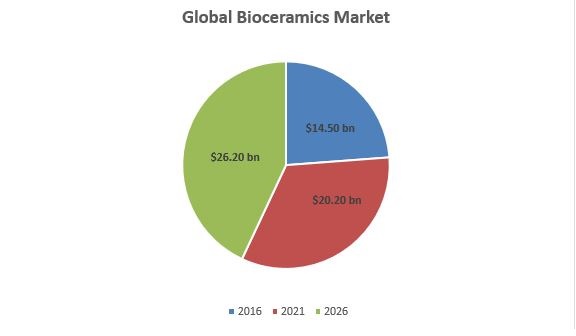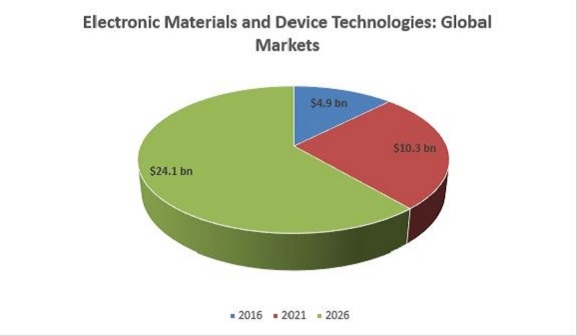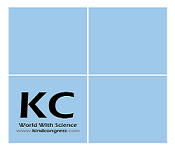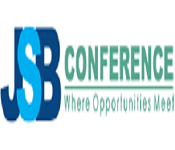Theme: “Sustainable new materials and recycling technologyâ€
MatSciEngg 2019
With the magnificent success of 31st Materials Science and Engineering Conference: Advancement & Innovations, ME Conferences is proud to announce the 32nd Materials Science and Engineering Conference: Advancement & Innovations, to be held during October 24-25, 2019 at Helsinki, Finland. On this auspicious occasion, the Organizing Committee invites the participants from all over the globe to take part in this annual flagship conference with the theme “Sustainable new materials and recycling technology”. MatSciEngg 2019 aims in proclaim knowledge and share new ideas amongst the professionals, industrialists, and students from research areas of Materials Science, Nanotechnology, Chemistry and Physics to share their research experiences and indulge in interactive discussions and technical sessions at the event. The Conference will also have a space for companies and institutions to present their services, products, innovations and research results.
Track: Materials Science and Engineering
Materials Science is the investigation of the properties of solid materials and how those properties are controlled by a material's constitution and structure. It grew an amalgam of strong state material science, metallurgy and engineering. Since the rich assortment of materials properties can't be comprehended inside the setting of any single established order. With a fundamental comprehension of the sources of properties, materials can be chosen or intended for a gigantic assortment of uses, running from auxiliary steels to microchips. Materials science is subsequently critical to designing exercises. For example, hardware, aviation, media communications, data handling, atomic power, vitality transformation.
Materials researchers accentuate seeing how the historical backdrop of a material (its handling) impacts its structure, and accordingly the material's properties and execution. The comprehension of preparing structural properties connections is known as the materials worldview. This worldview is utilized to propel understanding in an assortment of research regions including nanotechnology, biomaterials, and metallurgy. Materials Science is additionally an imperative piece of criminological designing and disappointment examination - researching materials, items, structures or parts which fall flat or don't work as expected, making individual damage or harm to property. Such examinations are critical to comprehension. For instance, the reasons for different avionics mishaps and occurrences.
Track: Nanomaterials and Nanotechnology
The field of nanomaterial is inaccurately dealt with the traditional field of Science into characteristic (carbon-based) nanomaterial. For instance, fullerenes, and inorganic nanomaterial in perspective of various segments like silicon. Instances of nanomaterial fuse fullerenes, carbon nanotubes, Nano crystals, etc. nanomaterial portray on a basic level, materials of which a single unit is evaluated (in no short of what one is estimating) in the region of 1 and 1000 nanometres (10−9meter) however, it is normally 1-100 nm. As nanotechnology makes, nanomaterial are finding uses as a piece of therapeutic administrations, equipment, magnificence mind items, materials, information advancement and environmental security.
Nanomaterials are not only the process of minimizing the size of particles. They often need different manufacturing approaches and they call for a chance examining possible exposures rising in the midst of their make and use.
Track: Biosensors
The expression "biosensor" is another way to say "natural sensor." A biosensor is an investigative gadget which changes over an organic reaction into an electrical flag. The gadget is comprised of a transducer and an organic component that might be a chemical, an immune response or a nucleic corrosive. The bio component collaborates with the analyte being tried and the natural reaction is changed over into an electrical flag by the transducer. Electrochemical biosensors are typically in view of enzymatic catalysis of a response that produces or expends electrons (such chemicals are appropriately called redox proteins). Amperometric biosensors are independent coordinated gadgets in view of the estimation of the current coming about because of the oxidation or decrease of an electrodynamics natural component giving particular quantitative expository data.
A potentiometric biosensor can be characterized as a gadget joining an organic detecting component associated with an electrochemical potential transducer. Potentiometric biosensors more often than not depend on a biochemical response prompting less difficult compound species and its ensuing electrochemical identification. The expository flag created by a potentiometric biosensor is an electrical potential. An electrochemical biosensor is an independently incorporated gadget, which is fit for giving particular quantitative or semi-quantitative expository data utilizing an organic acknowledgement component (biochemical receptor) which is held in coordinate spatial contact with an electrochemical transduction component.
Track: Biomaterials and Healthcare
The biomaterials investigate amass expects to give material based answers for rising worldwide wellbeing and natural needs. In wide terms, we attempt to inquire about into the structure, plan and utilitarian execution of normal and artificially determined unadulterated and composite biomaterials with indicative or remedial effect on living frameworks. Our examination is composed of the covering research territories of nanostructured biomaterials, keen and bio responsive biomaterials and the bio interface. Entire qualities are in the mix of principal and connected research including worldwide advancement systems with scholastic, modern and clinical accomplices to amplify explore preparing potential and translational effect. This permits a scope of assorted and multidisciplinary to explore interests encompassing the structure, plan and useful execution of cutting-edge materials for use in organic and ecological frameworks. The applications for these materials go from medicinal gadget advances and tissue builds, nanotechnology, medicate conveyance frameworks, cardiovascular stenting, biosensor frameworks in ailment finding, ophthalmic biomaterials, materials which direct host reaction science, ecological cleaning, and shrewd material plan.
Track: Fibers and Composites
Fiber-fortified composite (FRC) is superior fiber composite accomplished and made conceivable by cross-connecting cellulosic fiber atoms with tars in the FRC material framework through a restrictive sub-atomic re-designing procedure, yielding a result of excellent auxiliary properties. Through this accomplishment of sub-atomic re-designing chose physical and basic properties of wood are effectively cloned and vested in the FRC item, notwithstanding other basic ascribes to yield execution properties better than contemporary wood.
FRC is a composite building material that comprises of three parts: the strands as the irregular or scattered stage, the lattice as the ceaseless stage, and) the fine interphase area, otherwise called the interface. This is a sort of cutting-edge composite gathering, which influences the utilization of rice husk, to rice structure, and plastic as fixings. This innovation includes a strategy for refining, mixing, and aggravating regular filaments from cellulosic squander streams to shape a high-quality fiber composite material in a polymer network. The assigned waste or base crude materials utilized as a part of this occurrence are those of waste thermoplastics and different classes of cellulosic squander including rice husk and sawdust. The disappointment systems in FRC materials incorporate delamination, intraluminal grid breaking, longitudinal framework part, fiber/lattice deboning, fiber haul out, and fiber fracture.
Track: Ceramics and Magnetic Materials
Long haul mechanical unwavering quality is a key issue in their definitive use for a particular application. Connections amongst preparing and administration conditions/condition to the disappointment of earthenware production by break, weakness or twisting are key parts of materials applications. This track covers Mechanics, Characterization Techniques, and Equipment, Tribology and Wear, Environmental Effects, Reliability, and Small Scale Testing, Mechanical Behaviour test, Processing - Microstructure - Mechanical Properties Correlation. Ceramics production is delegated inorganic and non-metallic materials that are basic to our day by day way of life. Artistic and materials engineers are the general population who plan the procedures in which these items can be made, make new kinds of clay items, and find diverse utilizations for earthenware items in regular day to day existence.
Ceramics production is surrounding us. This classification of materials incorporates things like tile, blocks, plates, glass, and toilets. Pottery can be found in items like watches (quartz tuning forks-the timekeeping gadgets in watches), snow skies (a piezoelectric-earthenware production that pressure when a voltage is connected to them), cars (spark plugs and fired motor parts found in race cars), and telephone lines. They can likewise be found on space transports, machines (finish coatings), and planes (nose cones). Contingent upon their technique for development, pottery can be thick or lightweight. Ordinarily, they will exhibit fantastic quality and hardness properties; nonetheless, they are regularly weak in nature. Earthenware production can likewise be framed to fill in as electrically conductive materials, objects enabling power to go through their mass, or separators, materials keeping the stream of power. A few potteries, like superconductors, likewise show attractive properties.
Track: Catalytic Materials
It has been said that everything is a catalyst for something. Although profound, the statement is not very useful unless materials are organized into groups with common explained with theories or models, and systematized into patterns from which new catalysts may be predicted. In this chapter, we examine common types of catalytic materials, current theories underlining their mode of action, and activity patterns useful in design. Much of this is brief by necessity, but the interested reader will find sufficient references for further study. For the casual reader, this chapter illustrates the complex background in catalysis and testifies to the current attempts to lift catalysis from an “art” to a “science.”
Catalytic materials fall into well-defined categories. The state of each catalyst is a consequence of process demands, e.g., for high activity, or degree of interaction with other components. Classification by electrical conductivity, as metals, semiconductors, and insulators, remains a satisfactory method in treating the theoretical background and behaviour patterns of these widely differing materials.
Track: Electrical, Optical, and Magnetic Materials
Material science has a basic influence on metallurgy also. Powder metallurgy is a term covering a broad assortment of courses in which materials or parts are delivered utilizing metal powders. They can stay away from, or unbelievably diminish, the need to use metal removal shapes and can reduce the costs. Pyro metallurgy consolidates warm treatment of minerals and metallurgical metals and thinks to acknowledge physical and substantial changes in the materials to enable recovery of beneficial metals. An aggregate learning of metallurgy can help us to isolate the metal in a more conceivable way and can be used to a broader region. The extraction of productive minerals or other topographical materials from the earth is called as Mining and Metallurgy is the field of Materials Science that game plans with physical and manufactured nature of the metallic and intermetallic blends and mixes. Distinctive strategies and innovations utilized as a part of the extraction and generation of different metals are extractions of metals from minerals, decontamination; Metal throwing Technology, plating, showering, and so forth in the arrangement of procedures, the metal is subjected to thermo genic and cryogenic conditions to investigate the erosion, quality, and durability and to ensure that the metal is crawled safely.
Track: Mining, Metallurgy and Materials Science
Material science has a basic influence on metallurgy also. Powder metallurgy is a term covering a broad assortment of courses in which materials or parts are delivered utilizing metal powders. They can stay away from, or unbelievably diminish, the need to use metal removal shapes and can reduce the costs. Pyro metallurgy consolidates warm treatment of minerals and metallurgical metals and thinks to acknowledge physical and substantial changes in the materials to enable recovery of beneficial metals. An aggregate learning of metallurgy can help us to isolate the metal in a more conceivable way and can be used to a broader region. The extraction of productive minerals or other topographical materials from the earth is called as Mining and Metallurgy is the field of Materials Science that game plans with physical and manufactured nature of the metallic and intermetallic blends and mixes. Distinctive strategies and innovations utilized as a part of the extraction and generation of different metals are extractions of metals from minerals, decontamination; Metal throwing Technology, plating, showering, and so forth in the arrangement of procedures, the metal is subjected to thermo genic and cryogenic conditions to investigate the erosion, quality, and durability and to ensure that the metal is crawled safely.
Track: Materials Science in Construction Engineering
Amid the previous decade, the necessities of the country and the world have required structural architects to likewise concentrate on the reuse of important materials and assets, which thusly has made energizing difficulties in seeing how to artificially and mechanically balance out these materials for reuse. Current difficulties require the use of micromechanics, PC helped representation devices, thermodynamics, energy, and a valuation of developing procedures to tackle issues. Structural specialists have adjusted and connected multidisciplinary standards to take care of issues and have utilized comparative ways to deal with those utilized as a part of strong rocket fuels, cement, metals, and earthenware production. One of the greatest gifts for the building materials division is the apparently perpetual raising of the bar by different national arranging offices on "green" building. Agreeing a give an account of Forbes.com, which refers to an examination report from Navigant Research, the overall market for green development materials will develop from US$116 billion out of 2013 to an abundance of US$254 billion by 2020. Europe, with its accentuation on diminishing emanations, will presumably be the biggest territorial market, representing around half of the worldwide interest for items by 2020. TechNavio delivered a report, "Worldwide green building material market 2012– 2016," in which it conjecture request development internationally to be around 17.9% compound yearly development rate.
In history there are slants in building materials from being: normal to winding up more man-made and composite; biodegradable to enduring; indigenous (nearby) to being transported comprehensively; repairable to dispensable; and decided for expanded levels of flame wellbeing. These patterns tend to expand the underlying and long-haul monetary, biological, vitality, and social expenses of building materials.
Materials science is advancing each day. A great many concoction and material blends make challenges for researchers while applying them to true applications that purchasers touch each day. Staying informed concerning the most recent patterns in material science over an extensive variety of ventures can be an overwhelming undertaking. The utilization and handling of materials has been one of the primary main thrusts of improvement and success since the beginning of progress. For quite a long time materials grew fundamentally in the fields of earthenware production, metallurgy and glass. All the more as of late an undeniably wide and complex scope of various propelled materials, generation forms, and coordinated practical frameworks has developed. Materials science and designing radically strengthened in the 1960s, when utilizations of materials turned out to be progressively in light of logical standards instead of the experimentation that won before World War II. Materials science and Engineering today can be depicted as 'the investigation of substances from which something unique is made or can be made and the combination, properties, and utilizations of these substances. This definition covers both normal, conventional materials and manufactured, composed materials.
Scope & Importance
The field of materials have not just helped the advancement in various fields in science and innovation but also additionally contributed towards the change of the nature of human life all things considered. This has turned out to be conceivable with the distinctive disclosures and innovations prompting the improvement of different applications. The center point of 32nd Materials Science & Engineering Conference 2019 gathering is to give a chance to the agents to meet, interface and trade new thoughts in the different regions of Materials Science.
Major Materials Science Associations around the Globe
-
American Chemical Society (ACS)
-
American Physical Society (APS)
-
The Materials Information Society (ASM International)
-
The Materials Research Society (MRS)
-
Microscopy Society of America (MSA)
-
The Minerals, Metals & Materials Society (TMS)
-
Sigma Xi: The Scientific Research Society
-
International Society for Optical Engineering (SPIE)
-
The American Ceramic Society (ACerS)
Major Nanotechnology Associations around the Globe
-
National Center for Nanoscience and Technology (China)
-
National Institute for Nanotechnology (Canada)
-
Iranian Nanotechnology Laboratory Network
-
Russian Nanotechnology Corporation
-
National Nanotechnology Center (NANOTEC), Thailand
-
National Nanotechnology Initiative (United States)
-
National Cancer Institute Alliance for Nanotechnology in Cancer
-
National Institutes of Health Nanomedicine Roadmap Initiative
-
American National Standards Institute Nanotechnology Panel (ANSI-NSP)

Global market reports for Water-soluble Polymers, Magnets and Magnetic Materials, Electroceramics and Ion Exchange Materials with increase in about billion US$.

The global bioceramics market reached nearly $14.5 billion in 2016 and should reach $20.2 billion by 2021 and so on, at a compound annual growth rate (CAGR) of 6.9% through 2026.

The global market for advanced electronic materials totalled nearly $4.9 billion in 2016. This market should total $10.3 billion in 2021 and $24.1 billion by 2026 at a five-year compound annual growth rate (CAGR) of 18.5%, for the period of 2021-2026.
Related Conferences:
- 21st International Conference on Advanced Energy Materials and Research, July 11-12, 2019, Zurich, Switzerland
- 35th World Congress on Material Science and Nanotechnology, July 22-23, 2019, Melbourne, Australia
- 23rd International Conference on Advanced Materials and Nanotechnology, August 19-20, 2019, Tokyo Japan
- World Congress on Materials Science & Engineering, August 22-23, 2019, Valencia, Spain
- World Congress on Carbon and Advanced Energy Materials, September 23-24, 2019, Hong Kong
- 21st International Conference on Advanced Material science and Nanotechnology, September 26-27, 2019, Dubai UAE
- Materials Electrochemistry Conference: Advancements and Breakthroughs, September 26-27, 2019, Dubai, UAE
- 20th International Conference and Exhibition on Material Science and Engineering, September 16,17, 2019, Amsterdam, Netherlands
- International Conference on Materials Science and Engineering, September 16-18, 2019, Melbourne, Australia
- World Conference on Materials Science and Emerging Nanotechnology, September 1-3, 2019, Dubai, UAE
- International Scientific Conference on Materials Science, Non-equilibrium Phase Transformation, September 09-12, 2019, Varna, Bulgaria
- Materials Science & Technology Conference & Exhibition, September 29-03 October 2019, Portland, USA
- 25th World Congress on Advanced Materials, October 21-22, 2019, Singapore
- 24th International Conference on Advanced materials & Nanotechnology, October 21-22, 2019, Rome, Italy
- 3rd Annual Conference on Material Science and Engineering, October 23-25, 2019, Rome, Italy
- International Advances in Applied Physics and Materials Science Congress & Exhibition, October 22-28, 2019, Fethiye, Turkey
- 10th International Conference on Biopolymers and Polymer Sciences, November 18-19, 2019, Helsinki, Finland
- 5th International Conference on Crystallography & Novel materials, November25-26, Helsinki, Finland
- 24th European Meeting on Materials Science and Nanotechnology, November 25,26,2019, Rome, Italy
- 6th World Congress on Smart materials and Polymer Technology, December 16-17,2019, Dubai, UAE
- 2nd International Conference on Polymerization Catalysis, Flexible Polymer and Nanotechnology, December 16-17,2019, Abu Dhabi, UAE
- World Congress on Renewable materials and Environmental Engineering, December 4,5, 2019, New York, USA
- Materials Science & Technology Conference and Exhibition Columbus, October 17-21, 2021, Columbus, USA
Related Societies:
Europe: Federation of European Materials Societies; Spanish Association for Composite Materials; Austrian Society for Metallurgy and Materials; Czech Society for New Materials and Technologies; European Materials Research Society; Danish Metallurgical Society; European Composites Industry Association; Erwin Schrodinger society for Nano science; European Society for Composite Materials; Romanian Society for Biomaterials; Swiss Society for Biomaterials + Regenerative medicine; Czech Nanotechnology Industries Association; European Nano science and Nanotechnology Association; Russian Society of Scanning Probe Microscopy and Nanotechnology; The Polymer Society UK; British Plastic Association; European Polymer Dispersion and Latex Association; Netherlands Society For Biomaterials and Tissue Engineering; Italian Ceramic Society; The Hellenic Society for Biomaterials Greece; Italian Ceramic Society; Metallurgical Science Association; Italian Ceramic Society; Royal Microscopy Society; Society for Biomaterials; National Materials Advisory Board; International Union of Materials Research Societies
Asia Pacific and Middle East: International Association of Advanced Materials; Materials Research Society of Singapore; Composite Structures Society; Chinese Society for Composite Materials; Japan Society for Composite Materials; Chinese Society for Metals; Egyptian Society of Oral Implant ology; International Association of Advanced Materials; Society for Biomaterials; Bureau of International Recycling; Cast Metal Institute; Casting Industry Suppliers Association; Ductile Iron Society; Electrochemical Society; Materials Research Society; Society for the Advancement of Material and Process Engineering; The Mineral and Materials Society; The National Association of Corrosion Engineers; Materials Research Chemistry; Asia Pacific Society for Materials Research (APSMR); Society of Manufacturing Engineers; Society of Naval Architects and Marine Engineers; Society of Petroleum Engineers; Spring Metal Institute; Steel Structures Council; The Minerals Society; The National Association of Rusting Engineers; The Thermal Spray Society
USA: Materials Research Society (MRS); American Chemistry Council; American Ceramic Society; Association of Vacuum Equipment Manufacturers; Federation of Materials Societies (FEMS); The Materials Information Society; Society for Biomaterials; Society for Biomaterials and Tissue Engineering; Composite Materials Association; Society for Mining, Metallurgy, and Exploration; American Nano science and Nanotechnology Industries Association; International Association of Advanced Materials; International Society for Optical Engineering; The Scientific Research Society; Microscopy Society of America (MSA); Ecological Society of America; Pacific Science Association; U.S. Council for Automotive Research; Society of Engineering Sciences; Society for Applied Spectroscopy; Spring Metal Institute; Society of Petroleum Engineers; Society for the Advancement of Material and Process Engineering; Emerging Metals Association; International Society for Biomaterials; Metals Engineering Society of America; Society for Green Technology
Conference Highlights
- Materials Science and Engineering
- Nano materials and Nanotechnology
- Biosensors
- Biomaterials and Healthcare
- Fibers and Composites
- Ceramics and Magnetic Materials
- Catalytic Materials
- Electrical, Optical, and Magnetic Materials
- Mining, Metallurgy and Materials Science
- Material Science in Construction Engineering
To share your views and research, please click here to register for the Conference.
To Collaborate Scientific Professionals around the World
| Conference Date | October 24-25, 2019 | ||
| Sponsors & Exhibitors |
|
||
| Speaker Opportunity Closed | |||
| Poster Opportunity Closed | Click Here to View | ||
Useful Links
Special Issues
All accepted abstracts will be published in respective Our International Journals.
- Journal of Material Sciences & Engineering
- Journal of Powder Metallurgy & Mining
- Bioceramics Development and Applications
Abstracts will be provided with Digital Object Identifier by










